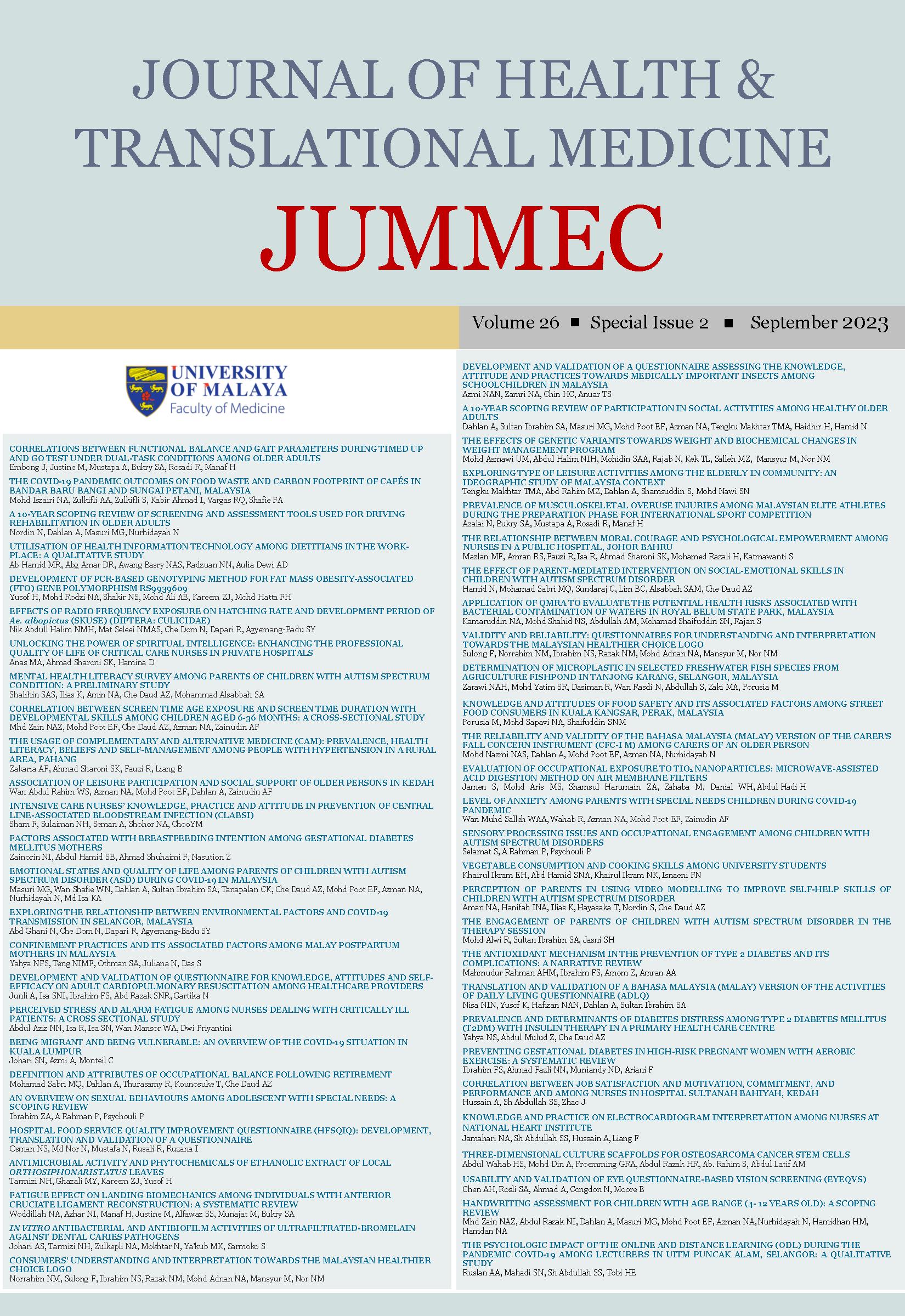BEING MIGRANT AND BEING VULNERABLE: AN OVERVIEW OF THE COVID-19 SITUATION IN KUALA LUMPUR
Received 2023-07-07; Accepted 2023-08-25; Published 2023-09-15
DOI:
https://doi.org/10.22452/jummec.sp2023no2.19Keywords:
COVID-19, Vulnerable, Pandemic, Immigrant, MalaysiaAbstract
COVID-19 can cause single or sporadic cases, leading to a limited or widespread outbreak or pandemic, requiring
public health intervention. This disease is a global pandemic that requires extreme strategies from both local and
global public health agencies. It has also caused havoc among public health practitioners and increases the risk among the vulnerable population. This research aims to provide an overview of the trend and demographic of COVID-19 cases in Kuala Lumpur, Malaysia. A total of 12,731 confirmed COVID-19 cases from January to December of 2020 are included, subjected to inclusion and exclusion criteria. Data only focuses on the cumulative features for COVID-19 cases based on the demographic. The analysis that had been carried out in this study are descriptive analysis for the demographic and Chi-Square test to determine the association between age and nationality. Result from the descriptive analysis shows that males (88.0%) recorded the highest number of COVID-19 cases with majority among those aged 31-50 years old (54.2%). In terms of case outcome, the majority of those infected were discharged from the hospital (99.8%). Immigrants represent the largest percentage of COVID-19 cases at 79.9% in total, with most coming from low-income countries. Chi-square between age and nationality indicates a significant association with p-value 0.000, highlighting a higher risk of transmission among the immigrants. This paper highlights the potential risk of COVID-19 among the immigrants in Kuala Lumpur at the start of the pandemic. As part of the vulnerable population, targeted efforts need to be made for immigrants to allow them equal access to healthcare and to reduce the burden of disease among public health practitioners.
Downloads
Downloads
Published
Issue
Section
License
All authors agree that the article, if editorially accepted for publication, shall be licensed under the Creative Commons Attribution License 4.0 to allow others to freely access, copy and use research provided the author is correctly attributed, unless otherwise stated. All articles are available online without charge or other barriers to access. However, anyone wishing to reproduce large quantities of an article (250+) should inform the publisher. Any opinion expressed in the articles are those of the authors and do not reflect that of the University of Malaya, 50603 Kuala Lumpur, Malaysia.


